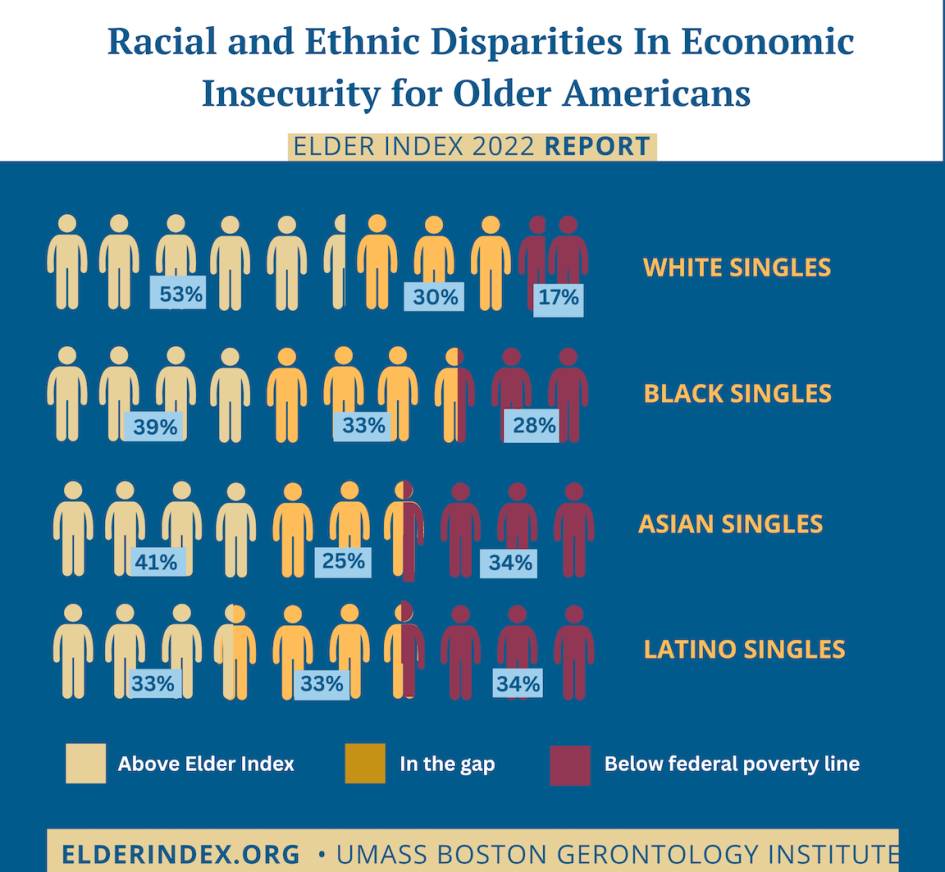New estimates based on the 2022 Elder IndexTM show that the risk of economic insecurity in later life is especially high for people of color. National averages suggest that among older people living alone, 43 percent of people who are White, 59 percent of those who are Asian, 61 percent of those who are Black, and 67 percent of those who are Latino have annual incomes below the Elder Index. The findings are shared in a new report, “Living Below the Line: Racial and Ethnic Disparities in Economic Security among Older Americans, 2022.”
The Elder Index, developed by UMass Boston gerontologists, measures the cost of covering basic needs for people aged 65 and older across every county in the United States. The index accounts for whether the residents live in one- or two-person households, if they rent or own their home (with or without a mortgage), and their health status. Overall 2022 Elder Index results suggest that 12 million older adults in the U.S. struggle to make ends meet.
“The dramatically higher percentages of people of color who struggle financially reflect lifelong disadvantages,” says Jan Mutchler, PhD, director of the Gerontology Institute at UMass Boston, who produces the Elder Index. “Early in life, patterns of structural disadvantage can lead to poorer access to higher education and raise the likelihood of holding low-wage or unstable jobs with fewer benefits. Cumulatively, the effect of these and other life-course experiences shaped by inequity raise the risk that older people of color will live with little wealth and meager or no pension income.”
Economic insecurity rates are considerably lower for older adult couples compared with people living alone, as two-person households benefit from economies of scale. But consistent with patterns among singles, rates of reported income falling below the Elder Index among Latino couples (46 percent), Asian (35 percent), and Black (32 percent) are far higher than among White couples (18 percent).
One important step to addressing these disparities, Mutchler says, is “ensuring that older people of color have equitable access to and awareness of programs and services designed to strengthen economic security.”


2 Pingbacks